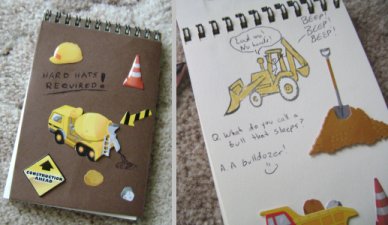- 0. Great Boxes Menu
- 1. Audience
- 2. Location
- 3. Clues
- 4. Details
- 5. Rules of Thumb
- 6. Statistics
- 7. Final Thoughts
Creating Great Letterboxes
It’s In the Details
They say it’s the thought that counts, and it really does! The very best letterboxes consider even the smallest details, from the type of container to use for the letterbox to the stamp within it. Perhaps you should include a writing implement in case a letterboxer comes unprepared or an explanation about letterboxing if your box might be found inadvertently by non-letterboxers.
One simple detail can make an otherwise ordinary box stand out. Consider your target audience; what you want to share with them and what you want them to walk away with. Think of at least one detail, just one, that you normally would not expect to find on a letterbox. Maybe it’s unusual or interesting. Perhaps something to make them laugh. Something that will stand out and make people remember your box.

The Loma Prieta Earthquake box was planted at the epicenter for the Loma Prieta earthquake—the perfect location for such a box! But it was one detail that made the box particularly memorable: a report about the earthquake. The report included pictures of the damage, statistics about the size and date of the quake, and even transcripts of 911 calls made during and immediately after the earthquake. The planter had the foresight to include an enormous logbook allowing people to write long, detailed entries about their experience during the earthquake. Once the several people found the box, the logbook entries became as precious as the report.
Lemony Snicket has created a series of boxes with an extraordinary attention to detail, carefully crafting clues using the same style of writing as used in his books (including long disclaimers about why you should not look for his boxes in the first place). The most astounding part of these boxes isn’t the clue, the location, or even the stamp—all of which are amazing in their own right—but the logbooks look exactly like miniature versions of the real Lemony Snicket books, right down to the About the Author in the back of the books.
So consider making your own logbook to personalize it specifically for your audience, or at least decorate a store-bought logbook with theme-specific stickers to show at least some thought was put into it.
You might consider adding stickers for kids to take in kid-friendly boxes. A box in an ice cream shop might include coupons for ice cream. If a stamp should be used with very specific colors, consider including them in the box, or at the very least, stamp the image in the logbook using the recommended colors so finders know to color it properly. Use a large logbook and encourage people to write a joke or tell a story—the mini-logbooks of today often discourage such a personal touch.
Unfortunately, there’s no textbook answer for what to do with your specific letterbox. For your box to really stand out, you need details that other letterboxes typically do not have. As soon as everyone starts doing the same thing, it’s no longer unique or interesting. So sit down and think about what you can do to make your box stand out.
A specific detail won’t make or break a box, but the more effort it looks like you put into a letterbox, the more people will go out of their way to find it, and it’s the details will suck them in.


